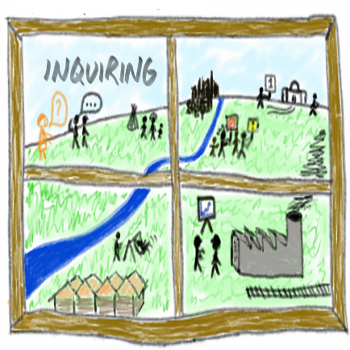A Framework for Systemic Design
DOI:
https://doi.org/10.7577/formakademisk.787Keywords:
systemic design, strategic design, design thinking, systems thinking, methodologyAbstract
As designers move upstream from traditional product and service design to engage with challenges characterised by complexity, uniqueness, value conflict, and ambiguity over objectives, they have increasingly integrated systems approaches into their practice. This synthesis of systems thinking with design thinking is forming a distinct new field of systemic design. This paper presents a framework for systemic design as a mindset, methodology, and set of methods that together enable teams to learn, innovate, and adapt to a complex and dynamic environment. We suggest that a systemic design mindset is inquiring, open, integrative, collaborative, and centred. We propose a systemic design methodology composed of six main activities: framing, formulating, generating, reflecting, inquiring, and facilitating. We view systemic design methods as a flexible and open-ended set of procedures for facilitating group collaboration that are both systemic and designerly.

Downloads
Published
How to Cite
Issue
Section
License
Authors who publish with this journal agree to the following terms:
- Authors retain copyright and grant the journal right of first publication with the work simultaneously licensed under a Creative Commons Attribution 4.0 License that allows others to share the work with an acknowledgement of the work's authorship and initial publication in this journal.
- Authors are able to enter into separate, additional contractual arrangements for the non-exclusive distribution of the journal's published version of the work (e.g., post it to an institutional repository or publish it in a book), with an acknowledgement of its initial publication in this journal.
- Authors are permitted and encouraged to post their work online (e.g., in institutional repositories or on their website) prior to and during the submission process, as it can lead to productive exchanges, as well as earlier and greater citation of published work (See The Effect of Open Access).
- The author(s) must manage their economic reproduction rights to any third party.
- The journal makes no financial or other compensation for submissions, unless a separate agreement regarding this matter has been made with the author(s).
- The journal is obliged to archive the manuscript (including metadata) in its originally published digital form for at least a suitable amount of time in which the manuscript can be accessed via a long-term archive for digital material, such as in the Norwegian universities’ institutional archives within the framework of the NORA partnership.
The material will be published OpenAccess with a Creative Commons 4.0 License which allows anyone to read, share and adapt the content, even commercially under the licence terms:
This work needs to be appropriately attributed/credited, a link must be provided to the CC-BY 4.0 licence, and changes made need to be indicated in a reasonable manner, but not in any way that suggests that the licensor endorses you or your use.



